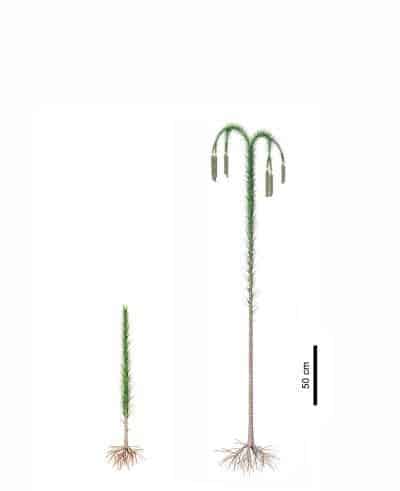The so-called “age of the fishes”, from 419 million to 359 million ago, is the period in which ancient fish took over the sea. But, despite initial beliefs, they weren’t the single species to quickly evolve in that period, according to a new study.

In the journal Current Biology, researchers described the largest example of a forest from back then, made up of 250,000 square meters of fossilized lycopsid trees, which was recently discovered near Xinhang in China’s Anhui province. The fossil forest, which is larger than Grand Central Station, is the earliest example of a forest in Asia.
The fossilized trees found in the forest are similar to palm trees, with branchless trunks and leafy crowns, and grew in a coastal environment prone to flooding. These trees were normally less than 3.2 meters tall, but the tallest was estimated at 7.7 meters, taller than the average giraffe.
Giant lycopsids trees would later define the Carboniferous period, which followed the “age of fishes”, and become much of the coal that is mined today. The Xinhang forest depicts the early root systems that made their height possible. Two other Devonian fossil forests have been found: one in the United States, and one in Norway.
“The large density as well as the small size of the trees could make Xinhang forest very similar to a sugarcane field, although the plants in Xinhang forest are distributed in patches,” sid Deming Wang, a professor in the School of Earth and Space Sciences at Peking University, co-first author on the paper.
The fossilized trees are visible in the walls of the Jianchuan and Yongchuan clay quarries, below and above a four-meter thick sandstone bed. Some fossils included pinecone-like structures with megaspores, and the diameters of fossilized trunks were used to estimate the trees’ heights. The authors remarked that it was difficult to mark and count all the trees without missing anything.
“Jianchuan quarry has been mined for several years and there were always some excavators working at the section. The excavations in quarries benefit our finding and research. When the excavators stop or left, we come close to the highwalls and look for exposed erect lycopsid trunks,” said Wang, who found the first collection of fossil trunks in the mine in 2016.






